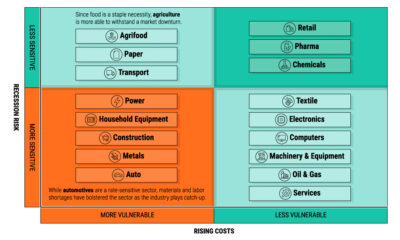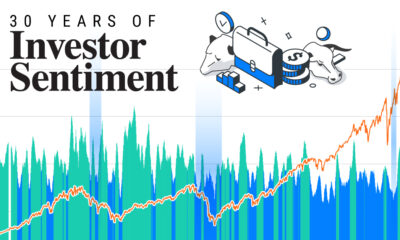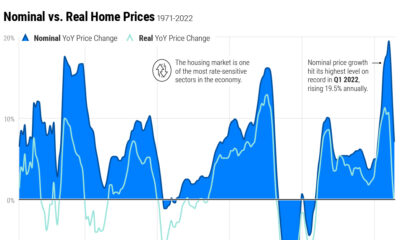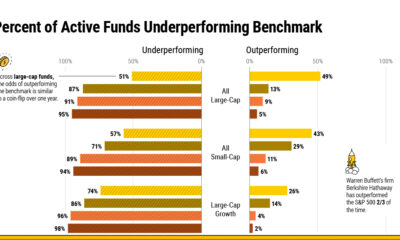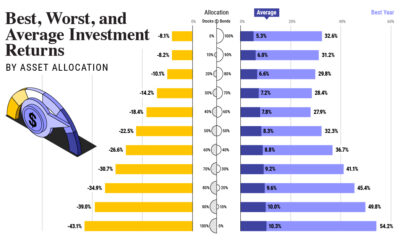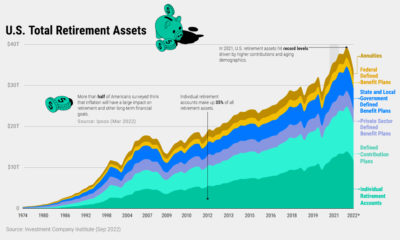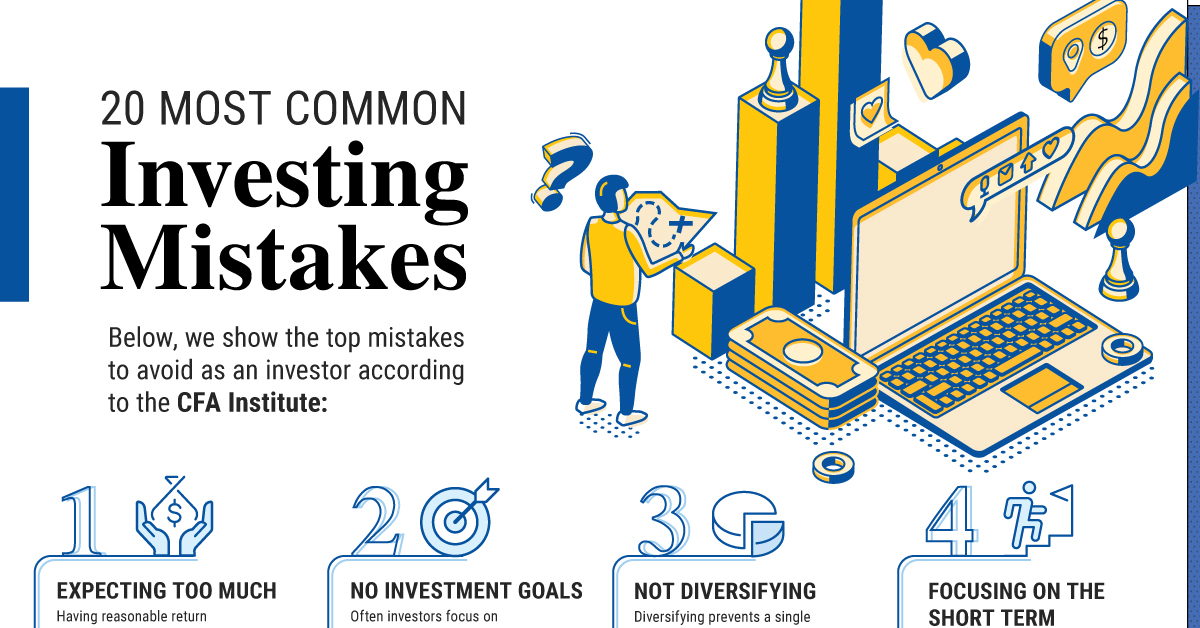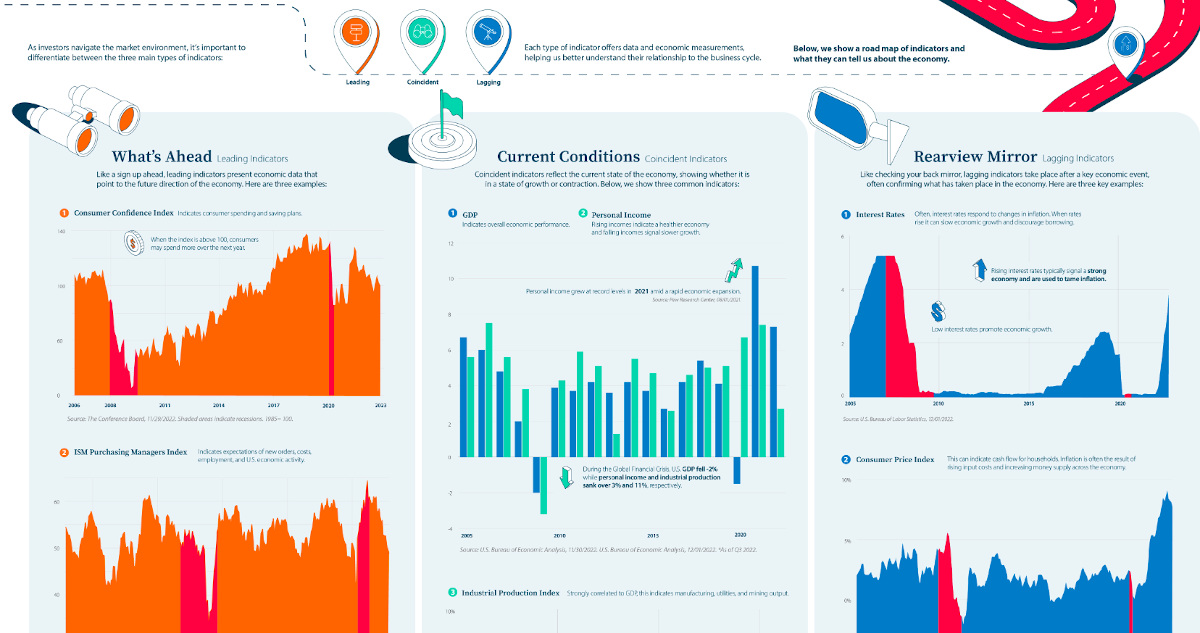View the high resolution version of this infographic. Buy the poster.
A Visual Guide to Economic Indicators
Economic indicators provide insight on the state of financial markets.
Each type of indicator offers data and economic measurements, helping us better understand their relationship to the business cycle. As investors navigate the market environment, it’s important to differentiate between the three main types of indicators:
- Leading
- Coincident
- Lagging
The above infographic from New York Life Investments shows a road map of indicators and what they can tell us about the economy.
What’s Ahead: Leading Indicators
Leading indicators present economic data that point to the future direction of the economy like a sign up ahead. Here are three examples.
1. Consumer Confidence Index
This key measure indicates consumer spending and saving plans. When the index is above 100, consumers may spend more over the next year. In December, the index jumped to 108 up from 101 in November. This was in part due to lower inflation expectations and improving job prospects.
In the December survey, 48% indicated that the job market remained strong, highlighting the strength of employment opportunities and likely influencing sentiment towards spending in the future.
2. ISM Purchasing Managers Index
The ISM Purchasing Managers Index indicates expectations of new orders, costs, employment, and U.S. economic activity in the manufacturing sector. The following table shows how the index is broken down based on select measures:
| Index | Nov 2022
| Oct 2022 | Percentage
Point Change | Direction
| Trend (Months)
|
| Manufacturing PMI | 49.0 | 50.2 | -1.2 | Contracting | 1 |
| New Orders | 47.2 | 49.2 | -2.0 | Contracting | 3 |
| Employment | 48.4 | 50.0 | -1.6 | Contracting | 1 |
| Prices | 43.0 | 46.6 | -3.6 | Decreasing | 2 |
| Imports | 46.6 | 50.8 | -4.2 | Contracting | 1 |
| Manufacturing Sector | | | | Contracting | 1 |
For instance, in November the index fell into its first month of contraction since May 2020. Falling new orders signal that demand has weakened while contracting employment figures indicate lower output across the sector.
3. S&P 500 Index
The S&P 500 Index indicates the economy’s direction since forward-looking performance is factored into prices. In this way, the S&P 500 Index can represent investor confidence as the index often serves as a proxy for U.S. equity markets. In 2022, returns for the index are roughly -20% year-to-date.
Current Conditions: Coincident Indicators
Coincident indicators reflect the current state of the economy, showing whether it is in a state of growth or contraction.
1. GDP
GDP indicates overall economic performance. Typically it serves as the most comprehensive gauge of the economy since it tracks output across all sectors. In the third quarter of 2022, real U.S. GDP increased 2.9% on an annual basis. That compares to 2.7% for the same period in 2021.
2. Personal Income
Rising incomes indicate a healthier economy and falling incomes signal slower growth. Personal income grew at record levels in 2021 to 7.4% annually amid a rapid economic expansion.
This year, U.S. personal income has grown at a slower pace, at 2.7% on an annual basis as of the third quarter.
3. Industrial Production Index
Strongly correlated to GDP, the industrial production index indicates manufacturing, utilities, and mining output. Below, we show trends in industrial production and how they correspond with GDP and personal income indicators.
| Date | U.S. GDP | Personal
Income | Industrial
Production |
| 2022* | 7.3% | 2.7% | 4.7% |
| 2021 | 10.7% | 7.4% | 4.9% |
| 2020 | -1.5% | 6.7% | -7.0% |
| 2019 | 4.1% | 5.1% | -0.7% |
| 2018 | 5.4% | 5.0% | 3.2% |
| 2017 | 4.2% | 4.6% | 1.4% |
| 2016 | 2.7% | 2.6% | -2.0% |
| 2015 | 3.7% | 4.7% | -1.4% |
| 2014 | 4.2% | 5.5% | 3.0% |
| 2013 | 3.6% | 1.3% | 2.0% |
| 2012 | 4.2% | 5.1% | 3.0% |
| 2011 | 3.7% | 5.9% | 3.2% |
| 2010 | 3.9% | 4.3% | 5.5% |
| 2009 | -2.0% | -3.2% | -11.4% |
| 2008 | 2.0% | 3.8% | -3.5% |
| 2007 | 4.8% | 5.6% | 2.5% |
| 2006 | 6.0% | 7.5% | 2.3% |
| 2005 | 6.7% | 5.6% | 3.3% |
*As of Q3 2022.
As the above table shows, factory production collapsed following the 2008 financial crisis, a key indicator for the depth of an economic downturn. Meanwhile, personal income sank over -3% while GDP fell -2%.
Despite economic uncertainty in 2022, industrial production remains positive, at a 4.7% growth rate, albeit somewhat slower than 2021 levels.
Rearview Mirror: Lagging Indicators
Like checking your back mirror, lagging indicators take place after a key economic event, often confirming what has taken place in the economy. Here are three key examples.
1. Interest Rates
Often, interest rates respond to changes in inflation. When rates rise it can slow economic growth and discourage borrowing. Rising interest rates typically signal a strong economy and are used to tame inflation. On the other hand, low interest rates promote economic growth.
Following years of record-low interest rates, the Federal Funds rate increased at the fastest rate in decades over 2022, jumping from 0.25% in March to 4.25% in December as inflation accelerated.
2. Consumer Price Index
This inflation measure can indicate cash flow for households. Inflation is often the result of rising input costs and increasing money supply across the economy.
Sometimes, inflation can reach a peak after an expansion has ended as rising demand in an economy has pushed up prices. In November, U.S. inflation reached 7.1% annually amid supply chain disruptions and price pressures across food prices, medical prices, and housing costs.
| Year | Inflation Rate | Annual Change |
| 2022* | 7.1% | 2.4% |
| 2021 | 4.7% | 3.5% |
| 2020 | 1.2% | -0.6% |
| 2019 | 1.8% | -0.6% |
| 2018 | 2.4% | 0.3% |
| 2017 | 2.1% | 0.9% |
| 2016 | 1.3% | 1.1% |
| 2015 | 0.1% | -1.5% |
| 2014 | 1.6% | 0.2% |
| 2013 | 1.5% | -0.6% |
| 2012 | 2.1% | -1.1% |
| 2011 | 3.2% | 1.5% |
| 2010 | 1.6% | 2.0% |
| 2009 | -0.4% | -4.2% |
| 2008 | 3.8% | 1.0% |
| 2007 | 2.9% | -0.4% |
| 2006 | 3.2% | -0.2% |
| 2005 | 3.4% | 0.7% |
*As of November 2022.
3. Unemployment Rate
The unemployment rate has many spillover effects, impacting consumer spending and in turn retail sales and GDP. Historically, unemployment falls slowly after an economic recovery which is why it’s considered a lagging indicator. When the unemployment rate rises it confirms lagging economic performance.
Overall, 2022 has been characterized by a strong job market, with unemployment levels below historical averages, at 3.7% as of October.
On the Road
To get a more comprehensive picture of the economy, combining a number of indicators is more effective than isolating a few variables. With these tools, investors can gain more perspective on the cyclical nature of the business cycle while keeping a long-term perspective in mind on the road ahead.


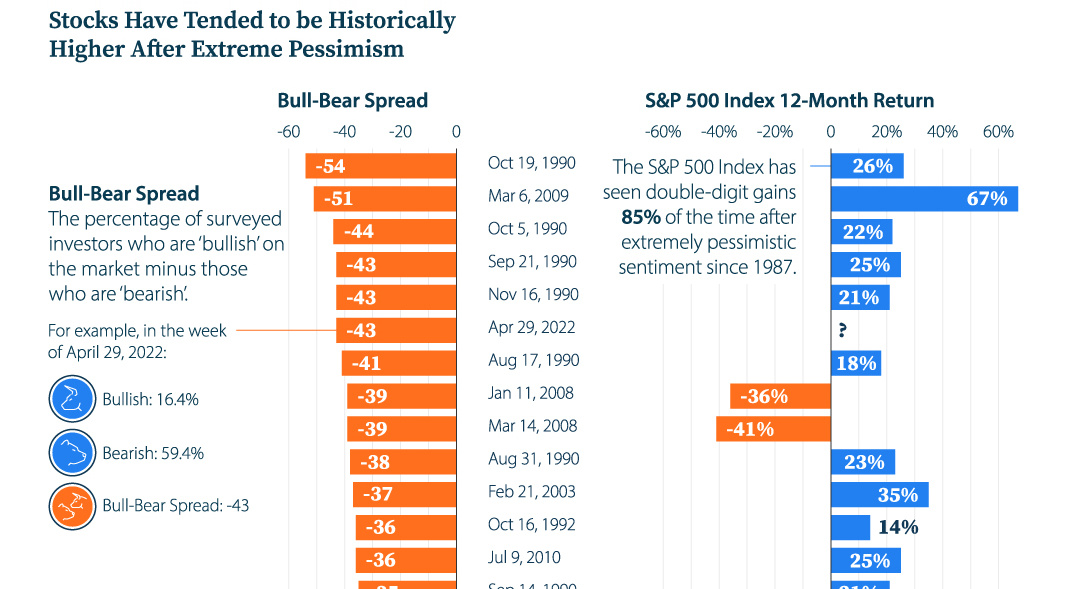
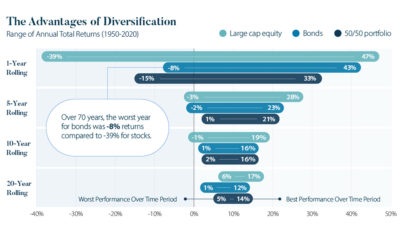
 Infographics2 years ago
Infographics2 years ago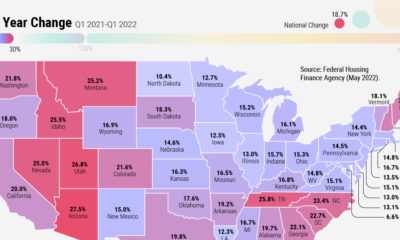
 Markets in a Minute2 years ago
Markets in a Minute2 years ago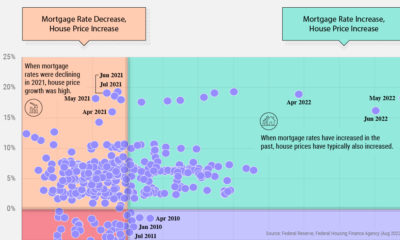
 Markets in a Minute2 years ago
Markets in a Minute2 years ago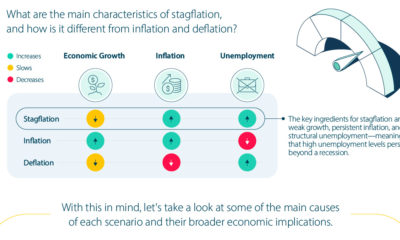
 Infographics2 years ago
Infographics2 years ago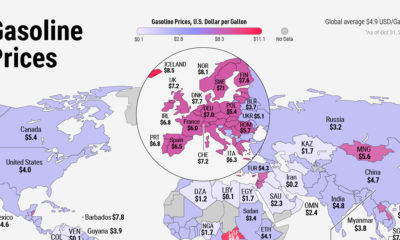
 Markets in a Minute1 year ago
Markets in a Minute1 year ago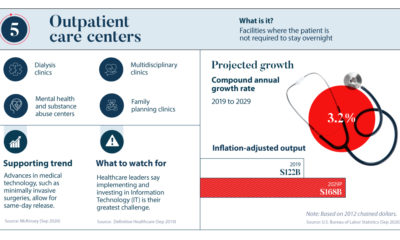
 Infographics3 years ago
Infographics3 years ago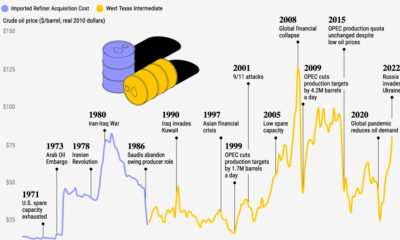
 Markets in a Minute2 years ago
Markets in a Minute2 years ago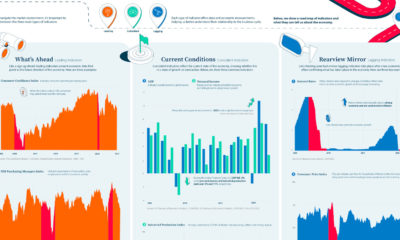
 Infographics1 year ago
Infographics1 year ago

